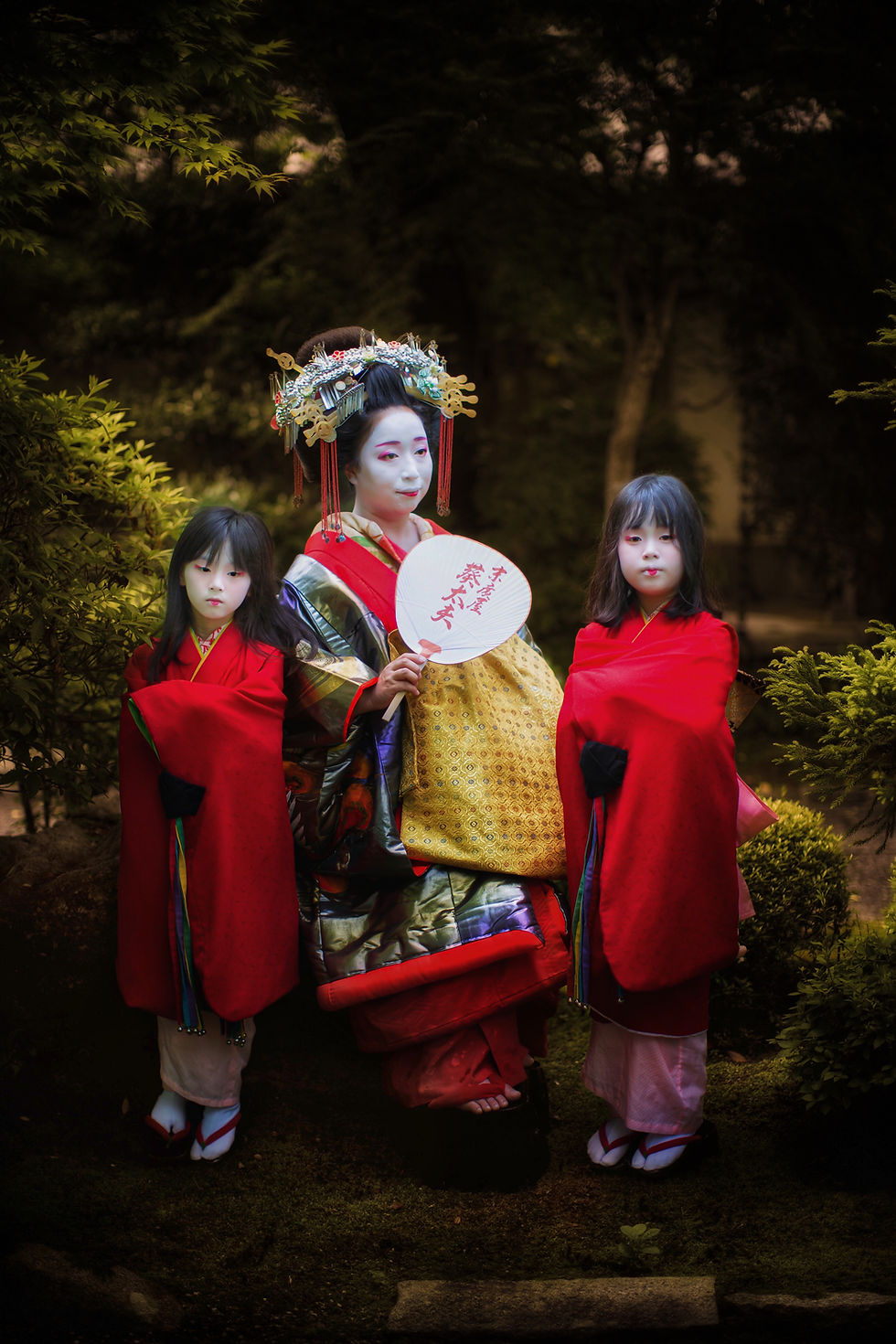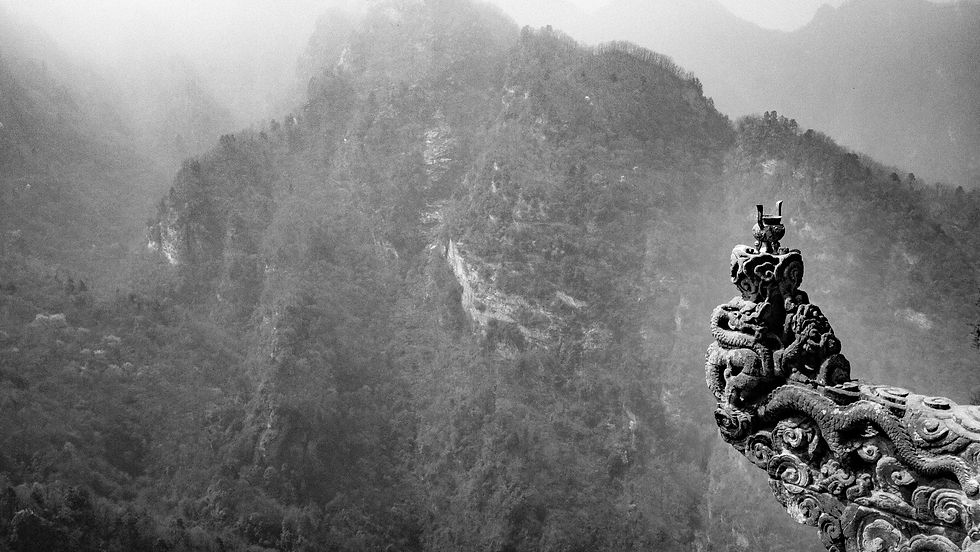Aoi Tayū 嶋原 末廣屋 癸太夫
- Robin Yong

- Jun 6, 2023
- 4 min read
Updated: Jan 14, 2024

Tayū (太夫) are the highest class of traditional courtesan in Japan. Though technically the highest class of oiran, a general term for the highest-ranking courtesans, tayū were distinguished historically from other oiran due to their intensive training from a young age in numerous traditional artforms, and the fact that they did not engage in sex work, unlike courtesans below their rank.
Tayū were known for their training in Japanese tea ceremony, kōdō, ikebana, Japanese calligraphy, poetry, dance, singing, and the playing of traditional instruments, such as the koto.
Tayū differed from lower ranks of oiran by the social class of their customers.
Maiko and Geiko originate from the culture of the town's people, it began with young girls dancing and playing instruments to attract tourists and business people at tea houses.
Oiran were the top rank person of women working at Red light districts, and Tayū is the top rank of women entertainers though oiran do have a similar attire to Tayū. On the other hand, Tayū originate from the culture of the nobility and they were the only entertainers allowed to attend the Emperor's banquet.
Traditionally, tayū catered for the uppermost echelons of society, including the nobility and the imperial court. Tayū were recognised as a group in the beginning of the Edo period. Due to the limited size of their clientele, they were never numerous; during their peak there were approximately 40 tayū working in Kyoto in the Shimabara district.
Tayū have survived into the modern day in Shimabara, Kyoto, having been allowed to continue practising the cultural and performing arts traditions of their profession following the introduction of the Prostitution Prevention Law in 1957; they were declared a "special variety" of geisha.
The most famous tayū in history was Yoshino tayū (吉野太夫), who lived in the 17th century. Trained from the age of 7, she quickly mastered the many arts required to be a tayū, and made her debut at the age of 14, immediately becoming a sensation. Yoshino was well-known for her beauty, skill and erudition. Yoshino is buried in the Jōshō-ji temple in Kyoto. Every year on the second Sunday in April, near the anniversary of her death, there is a procession of tayū to the temple, where a ceremony is held.
While entertaining, tayū wear elaborate kimono and hair ornaments weighing more than 2 kg (4.4 lb). Unlike modern-day oiran and geisha, but similarly to some apprentice geisha, they do not use wigs for their traditional hairstyles, but instead use their own hair.
Tayū wear white face makeup and blacken their teeth. Tayū are accompanied by an older female attendant and two kamuro (young girls wearing red livery bearing the tayū's name).
When outdoors, tayū wear distinctive extremely high platform sandals, which require a special mode of walking in order to look elegant, and also an attendant for support. This and many other aspects of the tayū's appearance were copied by the oiran, most notably in the oiran-dōchū, a procession where the oiran processes to meet a customer.

There are currently only 4 tayūs left in Japan.
Aoi Tayū is the youngest amongst them all and the most popular.
I have seen pictures of Aoi 4 years ago and tried to contact her, but had no luck of finding her until a few months ago. I remember in 2018, with my Japanese driver and me going up to the Shimabara district to look at the old teahouses where the tayūs were active, but unfortunately the area was closed during winter.
I chanced upon Aoi's contact a few months ago and wrote to her. Thankfully, she wrote back and we have been communicating over the past few months. I told Aoi how much I would like to photograph her, she replied she would like very much to be my model, but there's one big problem - she spoke no English and she's been communicating with me using Google Translate. I said not to worry because my Japanese driver is usually with me during my stay in Kyoto and will act as a translator.
The photo session is an ultra rare opportunity and takes a long time to prepare.
The makeup and hair do alone is quite an effort. It takes more than an hour to set up her hairstyle and only 2 hairdressers in Japan can do this. There are more than 20 hair ornaments and just the hair decorations alone weight a hefty 4kg! Like maikos, the hair is not a wig and it is the Tayū's natural hair.
Apart from the beautiful white make up, Tayū has her teeth painted black. The black teeth, called "Ohaguro" in Japanese and also the application of lipstick to only the lower lip is a traditional royal make-up method practiced since the Heian period. People during the Heian period believe that small lips are more beautiful and showing white teeth was considered embarassing.
Then there are two little girls beside the Tayū called Kamuro. Karumos are young Tayū trainees and they do start from a young age, some as young as 3 years old.





So this summer, I finally got my wish to meet up with Aoi and her mother (who's also a tayū) and photograph them in private temples and gardens. We even went to catch fireflies together!






Comments